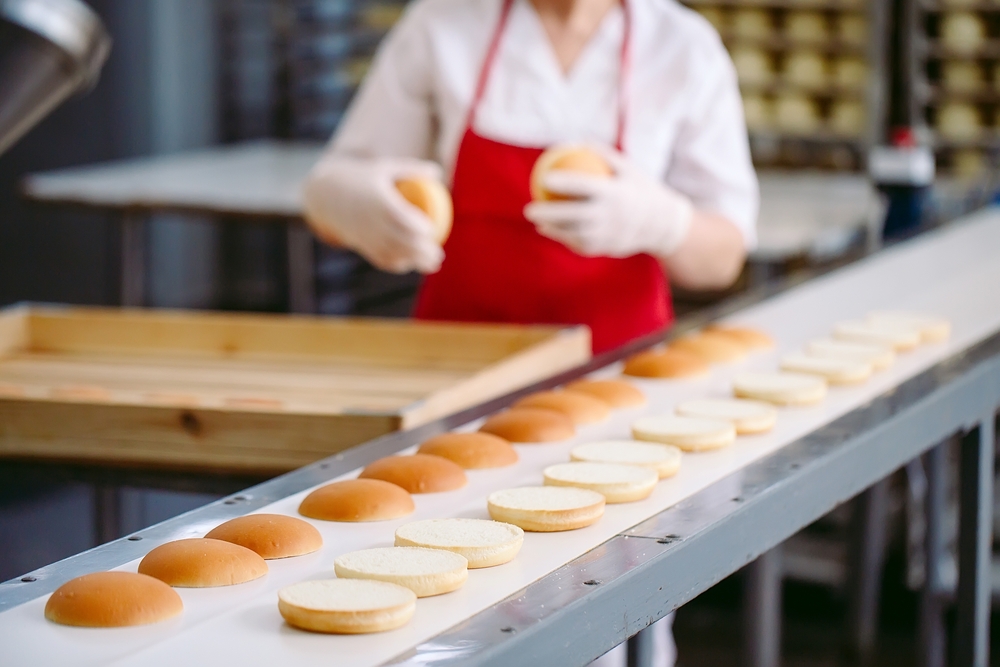Conveyor Belt Cleaning for Bakery Processing

In the bakery processing industry, manufacturers rely on conveyor belts to move products and packaging throughout operations. Conveyor belts are used for end-to-end processing lines, from when raw materials are made into doughs to when the bakery items become baked, decorated, and placed into packaging for shipments.
With the large amount of conveyor belts used, cleaning and sanitizing methods must become employed to promote the safety of workers while eliminating microorganisms and bacteria from contaminating floor products. Learn more about conveyor belt cleaning methods used in the bakery processing sector.
Methods of Conveyor Belt Cleaning for Bakery Processing
Conveyor belt cleaning methods are based on various factors to determine the types of cleaning that needs to be performed as well as how oven cleaning takes place. These factors involve the size of the company, the amount of food materials produced, the conveyor type, and how much soiling is present on the belt. When dealing with larger material volumes, the likelihood of these materials soiling the belt increases, as cleaning procedures must occur more frequently.
In addition, the type of food is an important aspect. If the conveyor belt moves sticky food, the conveyor may need additional cleaning protocols to remove residuals that resist standard cleaning processes.
Three types of cleaning methods are manual cleaning, semi-automatic cleaning, and automatic cleaning.
Manual Conveyor Belt Cleaning
Manual conveyor belt cleaning involves all the work done by hand. The worker sweeps away materials and carrybacks, scraps away sticky foods, scrubs off stains, vacuums dry materials, wipes off residues, and rinses the belts. These processes can be time-consuming and labor-intensive to the point where operations become delayed. Also, workers may not thoroughly remove leftover materials and residues in an effort to get the processing lines back online as quickly as possible. They may miss these particles that can lead to cross contamination or dangerous bacteria introduced into the food.
Semi-automatic Conveyor Belt Cleaning
Semi-automatic cleaning combines manual cleaning and automatic cleaning methods. Manual cleaning may involve scrubbing, scraping and brushing materials from the conveyor belt by hand. Then automatic cleaning processes use vacuums to siphon up materials and sprayers to wash and rinse off remaining particles. This process can help speed up cleaning procedures yet still takes up workers' time and may still result in food materials being missed during manual processes.
Fully Automatic Conveyor Belt Cleaning
Fully automatic conveyor belt cleaning relies on cleaning systems integrated into the processing lines. This method lowers the amount of downtime and improves cleaning efficiency and worker safety. These systems, sometimes called clean-in-place (CIP), require less labor as controllers are pre-programmed with a specific cleaning sequence based on the conveyor type. Spray nozzles on cleaning bars effectively remove the carryback and residues.
Benefits of An Automated Belt Cleaning System
The top benefits are to improve worker safety and reduce the possibility of cross contamination and mold growth that can occur that can enter food products. Yet there are also operational benefits to automated belt cleaning methods.
Fully automated belt cleaning can prevent belt misalignments and pulley slippage for the equipment. Food buildup becomes lodged along the belt's track and solidifies as it starts to push the track from its place. This same buildup can occur around the pulley. It makes the system run harder to perform its operations until the belt slips off the pulley head or from the drive.
The other benefits involve addressing food spillage and carryback. With the automated cleaning system in place, it removes the materials from the building before the food has a chance to dry and fully adhere and corrode or stain the surface. The cleaning system helps to prolong the life of the conveyor belt.
Best Spray Nozzles for Conveyor Belt Cleaning Systems
Lechler Series 612 PVDF flat fan nozzles can be used for both conveyor belts as well as cleaning oven racks. These nozzles have a short design as well as a flat gasket. The nozzles ensure even distribution of cleaning solutions and rinse water to effectively target the conveyor belt's full surface. Also, the design provides a uniform droplet size that can provide optimal cleaning while lowering water usage, helping to lower water usage.
For more information regarding Lechler flat nozzles for cleaning conveyors in the bakery processing industry, contact us today.